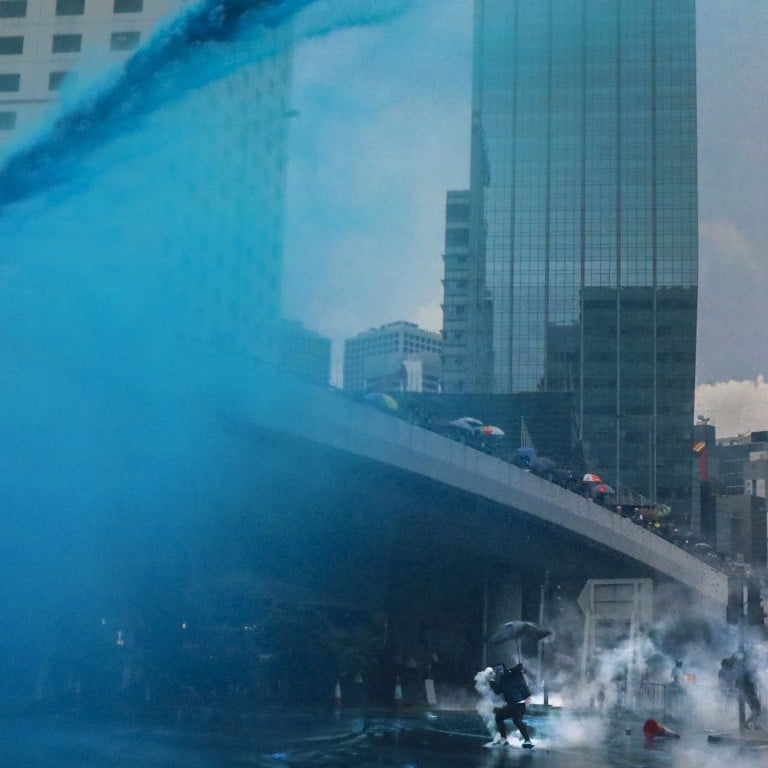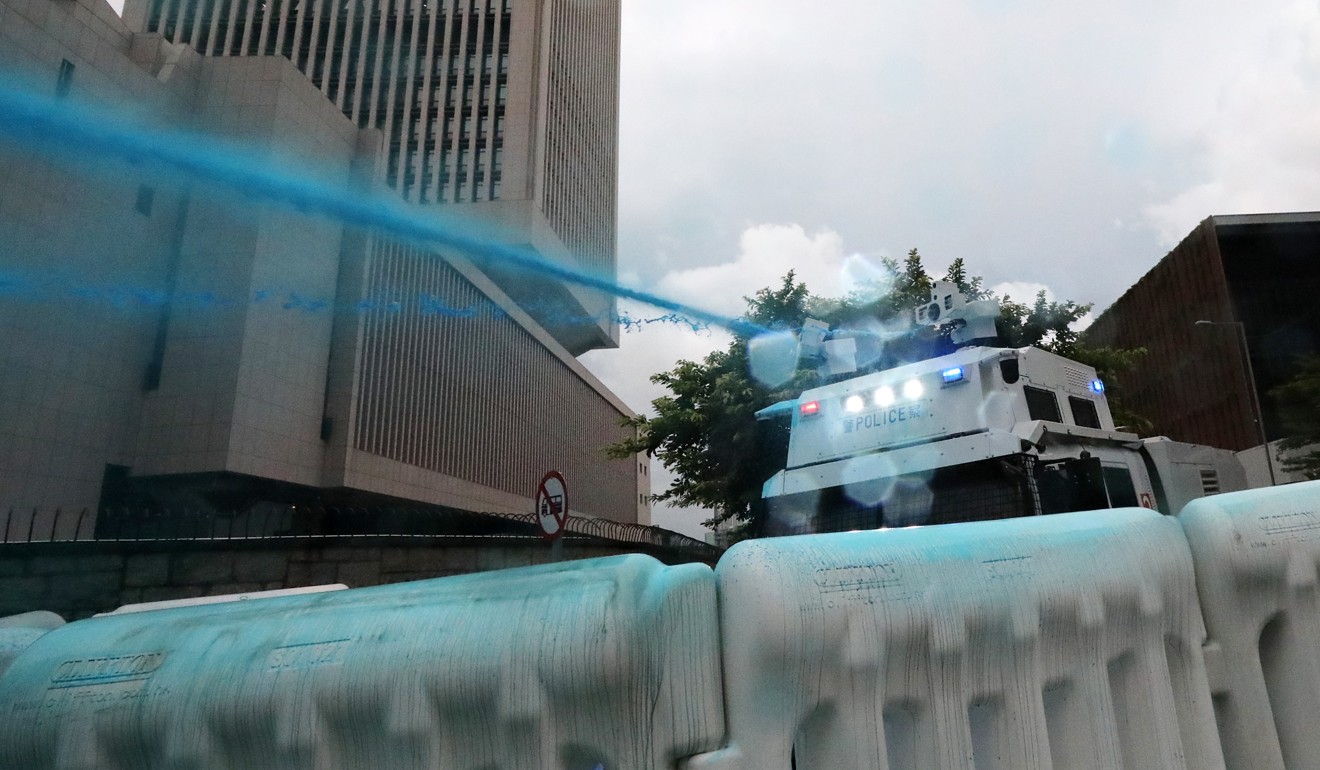
Indelible blue dye fired from water cannons by Hong Kong police – protesters adjust with new clothes and removal tips
- Incriminating pigment fired for first time as water cannons unleashed to fight off petrol bombs, bricks and raging fires
- No injuries reported from anti-riot vehicles – but police could track down protesters stained with dye
The water cannons fired the dye for the first time, with the bright blue pigment meant to help track down the hundreds of black-clad protesters in Admiralty who used metal bars to smash the gate of the Legislative Council building and blocked Harcourt Road.
A spokesman for the Hospital Authority said a woman had been admitted with injuries reportedly related to the day’s protests. She was admitted to Queen Mary Hospital and was in stable condition at 9pm.
A reporter from Taiwan was covered in the blue dye, saying it induced a burning pain. He said his skin became swollen after exposure to the dye, which he said he could not remove with water.
Inside several MTR stations, people distributed new clothes for protesters and shared soda power and alcohol wipes to remove the dye.
Protester-friendly websites also posted instructions on how to remove the incriminating liquid.
“Spray soda powder onto the painted area to soak it, then wipe it in one direction. But do not wipe it back and forth,” a post advised. “A better result can be achieved by using tissue with alcohol.”

The three anti-riot vehicles armed with water cannons cost HK$16.59 million (US$2.12 million). The Mercedes-Benz vehicles arrived in the city in May 2018 and had since been stationed at the Police Tactical Unit headquarters in Fanling.

According to operational guidelines, the vehicles would only be used if there was a serious injury, loss of life, widespread destruction of property or “disruption of major thoroughfares resulting in significant consequences for public order or safety”.
The assistant commissioner of police can authorise the vehicles’ deployment – but only after a threat assessment.
First-time protester enters the fray – unmasked, angry and certainly not alone
“Hong Kong police must exercise extreme caution in any deployment of water cannons in upcoming protests,” Amnesty International said last month. “The use of these powerful weapons in the city’s densely populated streets could cause serious injuries and further inflame tensions.”
Man-kei Tam, the director of Amnesty Hong Kong, said the weapons had enough force to knock a person over, push them into fixed objects, cause permanent loss of sight, or pick up objects and propel them as missiles.
There were no immediate reports of injuries from the water cannons on Saturday.
A study by a local police monitoring group in 2015, said jets of water could hit with 145kg of force from a distance of five metres and 127kg at 10 metres.

